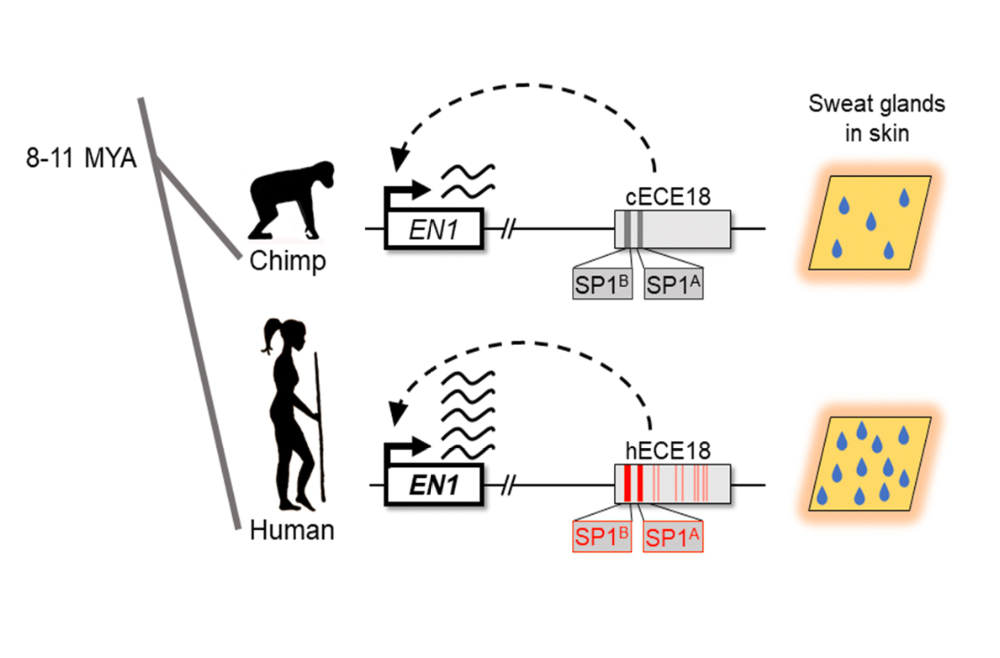Humans have a uniquely high density of sweat glands embedded in their skin—10 times the density of chimpanzees and macaques. Now, researchers at Penn Medicine have discovered how this distinctive, hyper-cooling trait evolved in the human genome. In a study published in The Proceedings of the National Academy of Sciences of the USA, researchers showed that the higher density of sweat glands in humans is due, to a great extent, to accumulated changes in a regulatory region of DNA—called an enhancer region—that drives the expression of a sweat gland-building gene, explaining why humans are the sweatiest of the Great Apes.
“This is one of the clearest examples I’ve ever seen of pinpointing the genetic basis for one of the most extreme and distinctively human evolutionary traits as a whole,” says the study’s senior author, Yana Kamberov, an assistant professor of genetics at Penn Medicine. “This kind of research is important not only because it shows how evolution actually works to produce species diversity but also because it gives us access into human biology that is often not possible to gain in other ways, essentially by learning from tweaking the biological system in a way that is actually beneficial, without breaking it.”
Scientists broadly assume that humans’ high density of sweat glands, also called eccrine glands, reflects an ancient evolutionary adaptation. This adaptation, coupled with the loss of fur in early hominins, which promoted cooling through sweat evaporation, is thought to have made it easier for them to run, hunt, and otherwise survive on the hot and relatively treeless African savannah, a markedly different habitat than the jungles occupied by other ape species.
This story is by Sophie Kluthe. Read more at Penn Medicine News.








